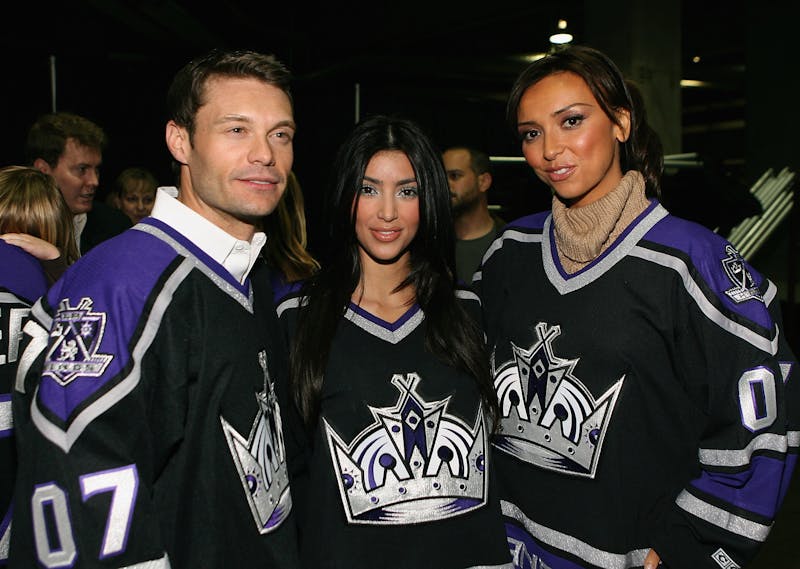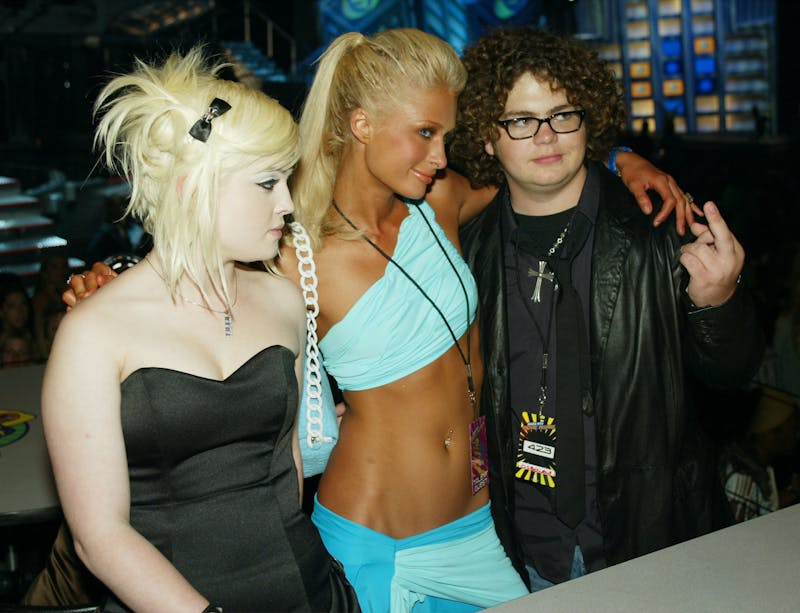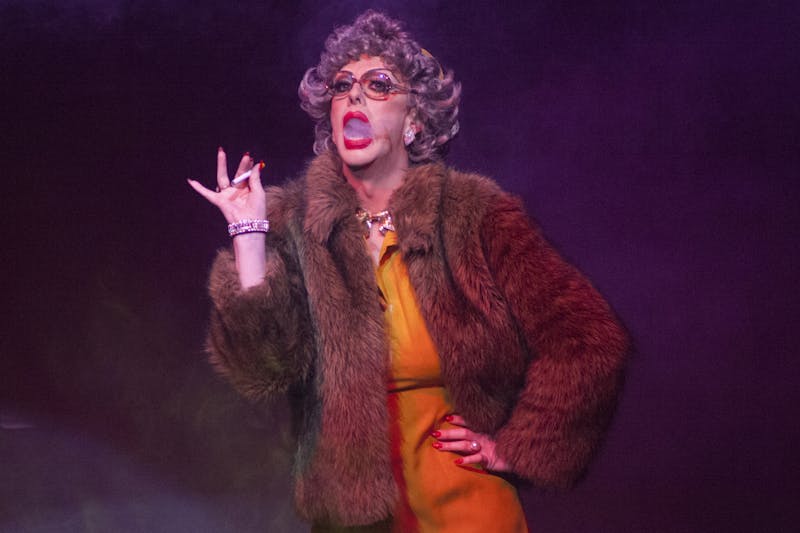“Being a Jewish bladesmith—that’s what really defines me. I’m going to crush the competition with my Hebrew hammer.” So says Adlai, a 50-year-old lawyer, who has quit his job to forge swords full time. Adlai is a contestant on the History Channel’s show Forged in Fire, in which bladesmiths compete under pressure to create ferociously edged weapons. Metal pounds metal and flames billow around the in-studio forge. Everything seems to glow red and radiate violence and masculinity. Adlai almost passes out from heat exhaustion and is eliminated in the first round.
The supply of people who want to be on the show, which is midway through its fourth season, seems inexhaustible. All of them appear to have at least ten years’ bladesmithing experience, even though recreational bladesmiths must by this stage of industrial capitalism be in short supply. But America is a big country, criss-crossed with deep subcultural seams. SyFy’s new contest show Cosplay Melee showcases the adorable nerds of the cosplay subculture, who live to dress up as their favorite fictional characters. Battle of the Ex-Besties has 14 pairs of former close friends compete to get over their differences and win $100,000 (tagline: “How much is forgiveness worth?). Face Off introduces competition into the extraordinary world of professional make-up and special effects artistry. Cake Wars is just what it sounds like.
Not so long ago, the shows that defined “reality television” focused on the fundamentals of existence: finding love, singing, surviving. American Idol invoked the national consciousness, as if it were some project of statecraft. Survivor has a similarly elemental, declarative title (especially compared to the whimsically titled Swedish show on which it was based, Expedition Robinson). These shows channeled big ambitions and offered big rewards, which may have been both their appeal and their downfall: It is no longer possible to crown the best singer in America, because she has come and gone 20 times before, hair extensions billowing behind her as she descends, Persephone-like, back into anonymity. It is no longer possible to see the recently canceled The Apprentice as an exercise in picking out budding executives, so much as it was Donald Trump’s stage for acting out a crude idea of power.
The idea of one big mainstream reality that these shows traded on was, of course, never a reflection of most lives. By contrast, the niche reality shows reveal a range of American cultures and give the audience a new experience: the chance to plunge into others’ unfamiliar realities. Dividing “reality” into ever more microscopic fields, the joyously weird new contest shows celebrate the deviations from the normal, amplifying a subculture’s arcana to stadium size. A cynic might cavil that networks are merely exploiting the American viewer’s new taste, trained by social media, for variety and distinctiveness.
But whatever the motive, the turn towards diversity in reality programming is presenting more of the social fabric than ever before. And these underlying values matter, because reality television is now producing presidents. On the great screen we call America, the meaning of “real” is changing.

The varieties of reality television have traditionally fallen into three chief categories: contests, “structured reality” shows, and the docu-soap. These categories often significantly overlap; on, say, the Bachelor spinoff Bachelor in Paradise, the contestants are kept on a “structured reality” desert island while they also compete for the affections of members of the opposite sex.
In our time, the docu-soap is the dominant reality television form in that it brings in the most money and generates the highest-level celebrities. Following in the tradition of shows like The Hills, the Real Housewives franchise, for instance, is a sprawling epic of drama, with an iteration for every major region of the U.S (Real Housewives of Beverly Hills, Real Housewives of Atlanta, Real Housewives of New Jersey, and so on). It has spawned spinoffs based on the lives of its most prominent characters, such as the nightmarish Vanderpump Rules. Like the Kardashians, the Real Housewives stars pump the dull minutiae of everyday life—getting a job, hanging out with one’s friends—with drama until the screen is fit to burst.
Since the American docu-soap’s inception with Bush-era shows like The Osbournes, the nature of performing one’s real life has changed. Whereas these earlier shows were defined by film crews following their stars during their daily routines, reality stories now live not just on television, but on social media platforms, from Twitter to Instagram to Snapchat. Social media have given a star new outlets to perform her brand, weaving in elements of her lifestyle seamlessly into the fabric of her fans’ day. But the biggest change is that the young fan also uses these same platforms to shape and express her own identity. When we watch a reality show, we know that screen entertainment and the world as it actually is are no longer separate. They have melted together.
The notion of social performance used to be quite abstruse, trapped within the discourse of academics like Judith Butler. But all teenagers understand that the Instagram they use and the Instagram Kim Kardashian uses are one and the same. The viewer is aware that she is playing a part just as her heroes are; that there are televised shows, and lots of smaller but no less carefully scripted un-televised shows going on around it. The screen performance does not end when the credits roll.

We are so accustomed to the idea of performance now—from celebrities, from our friends, from strangers online—that we hunger for variety and the flavor of the real within our entertainment. The subcultural niche beckons us, because it promises reality in an authenticity-starved landscape. The contest format of Forged in Fire feels contrived, and its production values are bizarre. But there is no denying the veracity of its contestants’ skill, their passion. And so we watch.
Forged in Fire is presented by former Army Ranger and Pararescueman Wil Willis. His long hair is scraped back into a ponytail, and his forearms are so muscular that they seem on the verge of tipping his body over forwards. The judging panel is composed of three hyper-macho men: Jason Knight, David Baker, and Doug Marcaida. Knight is a bearded man with an evil expression and a leathern kilt. David Baker is a historical weapons re-enactor who has an elaborate moustache and is fond of vests. “Watching Ray is like watching coffee brew,” Baker said of a somewhat elderly recent contestant, which is about as pithy as he gets.
Doug Marcaida is the panel’s only appealing character. Marcaida is an edged weapons combat specialist who designs his own range of knives and conducts the show’s “kill tests.” “This, sir, will cut,” Marcaida says with an indulgent smile, as a gelatinous fake torso leaks slime and organs behind him. Marcaida handles blades with a reckless tenderness, as if they are puppies. In one episode he is almost killed when a chunk of lethally sharp sword snaps off during a slice test and whistles past his neck. Marcaida dodges the fragment and smiles on.
In an interview with a prepper site called OffGridWeb, Marcaida has said that Forged in Fire has given him “a true personal understanding” of smithing. And, “in a romantic sense,” the show has allowed him “to see the process where the soul of the bladesmith is transferred to the weapon.” His words are surprising, since the atmosphere in the studio forge is aggressively macho. “I would like to be a master bodybuilder or a bladesmith,” says recent contestant Stephen, 19, before trailing off into musclebound silence. (Of the same contestant, Jason Knight later wishes that “Stephen would have wore a belt, because I’m tired of lookin’ at his underwear.”) But despite the crass and deeply masculine vibe of Forged in Fire, Marcaida’s term, “romantic,” accurately describes its charm. We do see the soul of the bladesmith transferred to the weapon. Of its maker’s loneliness, of pride in specialist craft, of instructions misinterpreted—each blade sings.

If Forged in Fire has a parallel outside the libertarian-survivalist world, it is in SyFy’s new competition show Cosplay Melee. This show is something like Ru Paul’s Drag Race meets Project Runway, set at a Star Trek convention. “In my police squad there are zero cosplayers,” officer Grace says. In the show’s recently aired first episode, Grace competes against Fred, 49 (“I paint toy soldiers for a living”), and Xavier, the painfully awkward and large-headed sibling of two star athletes.
As in Forged in Fire, contestants confront the judging panel three times in each episode. These ultra-niche competition shows thus triple the thrill level of their progenitors, like America’s Next Top Model, where the hopefuls faced the music only once per show. It’s worth mentioning that ANTM rumbles on, now helmed by the awful Rita Ora. Where Tyra Banks once popularized words that television actually needed, like “fierce,” Ora only exhorts the girls toward “boss initiative.” She sounds like an employment bureau. ANTM still makes its models come up with sob stories—“My parents are divorced!”—and the judges are still horrible to the young girls it pits against one another. “Do you know how much this costs?” barks some peroxide stylist who interprets a model’s allergies as ingratitude. “To bring Jason Derulo to you? This is expensive.”
To the supportive squeaking of Yvette Nicole Brown (whom you’ll recognize from Community), the contestants of Cosplay Melee put bits of plastic in toaster ovens to make them malleable; they dream up fictional characters complete with backstories (“She’s a bounty hunter with a very strong moral compass”); they transform themselves into whoever they want to be. The cosplayers’ craft is very beautiful, and they tend to respect and care for one another, even though they have to make up their own characters for copyright reasons and cannot just be “Batman.” After all, these freaks share an underground world.
American Idol wanted to find the best, nicest, prettiest, most skilled singer and make her rich. These shows crown the champion of something that barely anybody cares about. But we care, because the contestants care, and so these shows’ raison d’être is something like love. It is easy to tell when somebody truly loves their craft (as the models of America’s Next Top Model almost never do). The prize money for winning an episode of Forged in Fire or Cosplay Melee is $10,000 and nothing else.
These shows rail against “normal” pastimes, as well as the idea that in order to be valuable an activity must be productive. They encourage viewers to “follow their dreams” in a way that valorizes the dream the stranger and less practical it is. Work for love, not money, these shows say. Adlai from Forged in Fire was lured away from the legal profession by the romance of the forge. I doubt he will return.
But as the American public demands ever-increasing individual visibility, the traditional hierarchies of celebrity, and the distribution of power defined by those hierarchies, have dissolved. This dynamic is a double-edged sword, to use the terminology of Forged in Fire, empowering the powerless while giving far too much power to those who can only use it for ill. The distance between viewer and star, layman and professional, celebrity and president, has been eliminated. Who is to say whether we are moving forward or backward? We are living in reality television’s first true golden age, and we do not know how to wake up.
